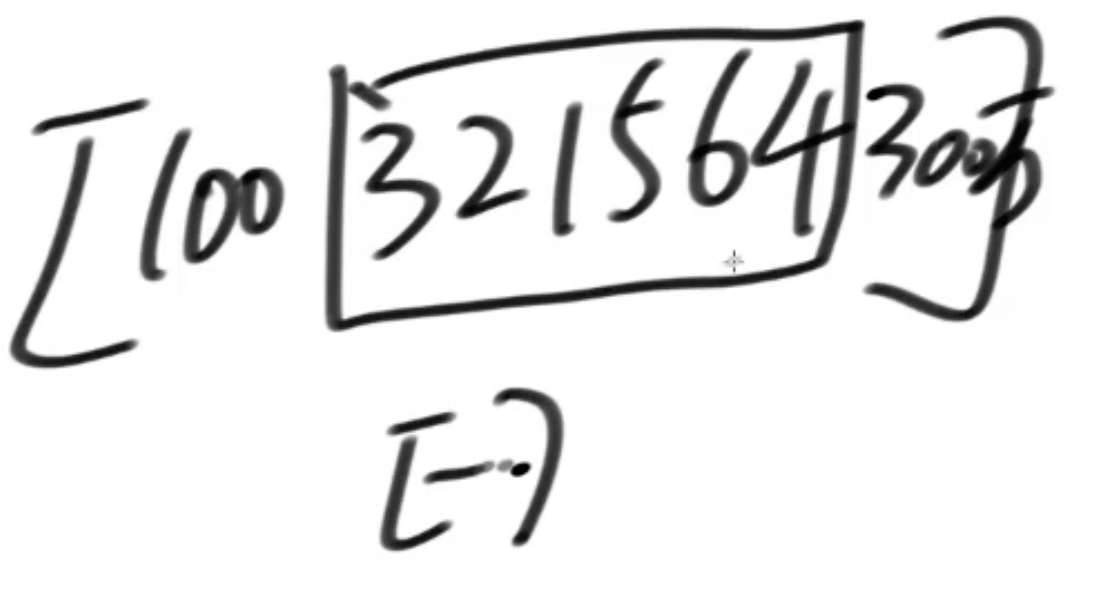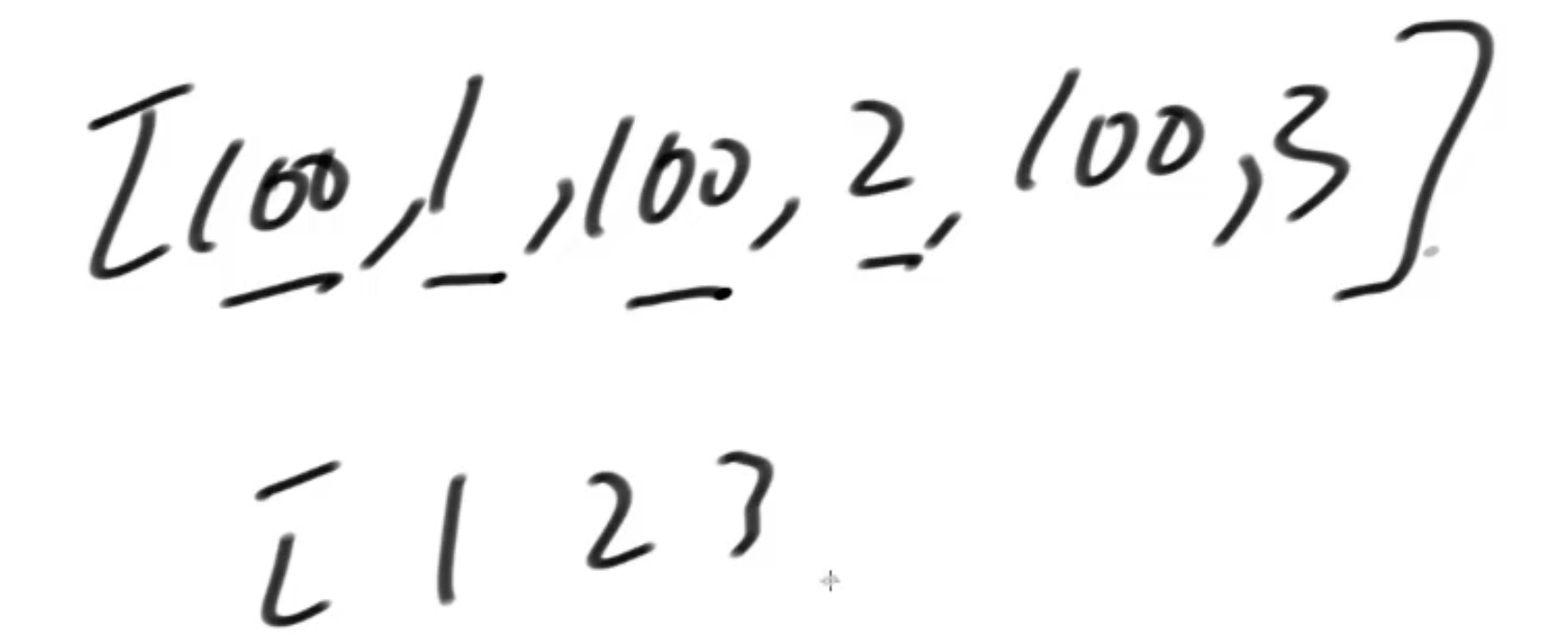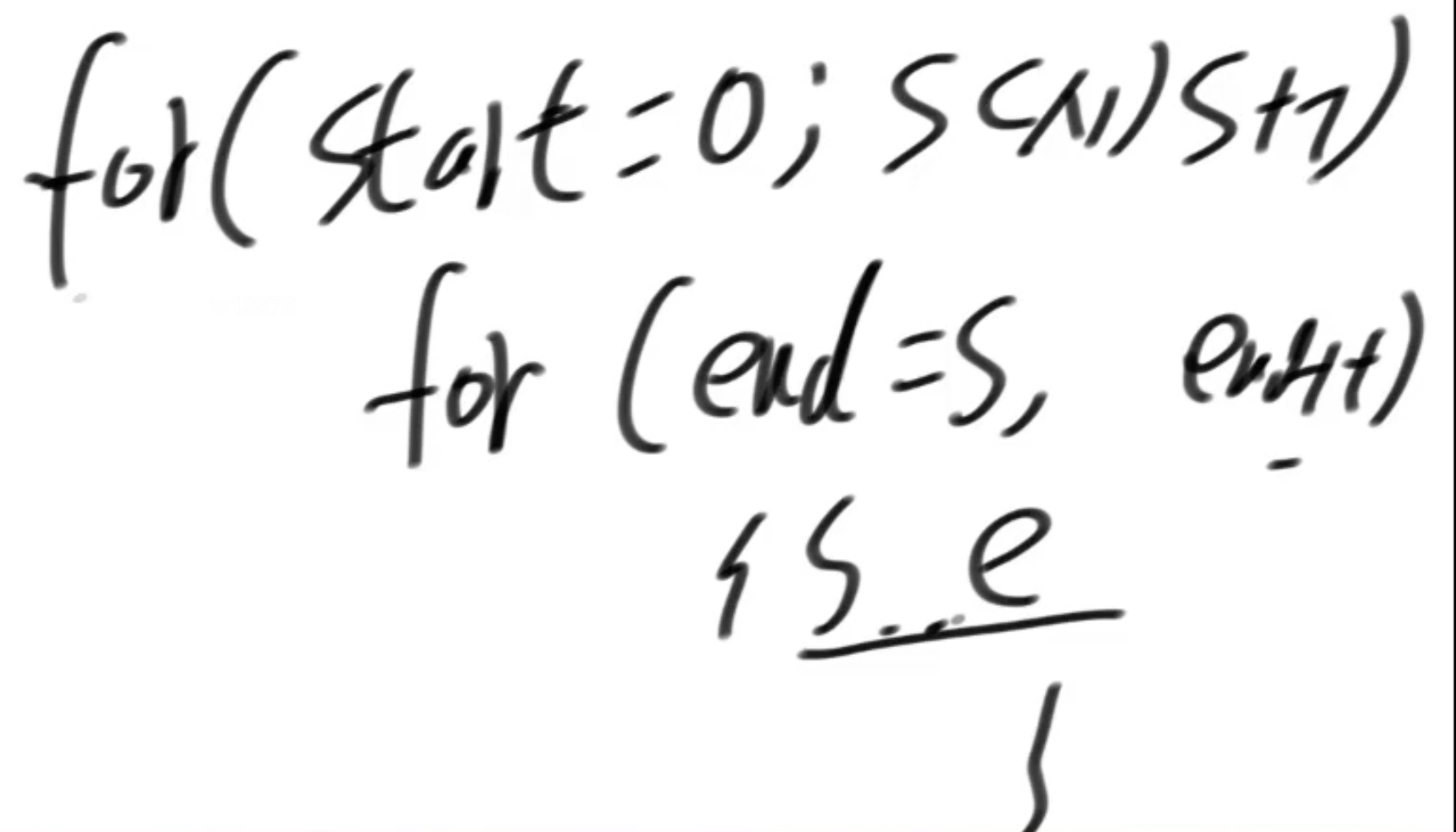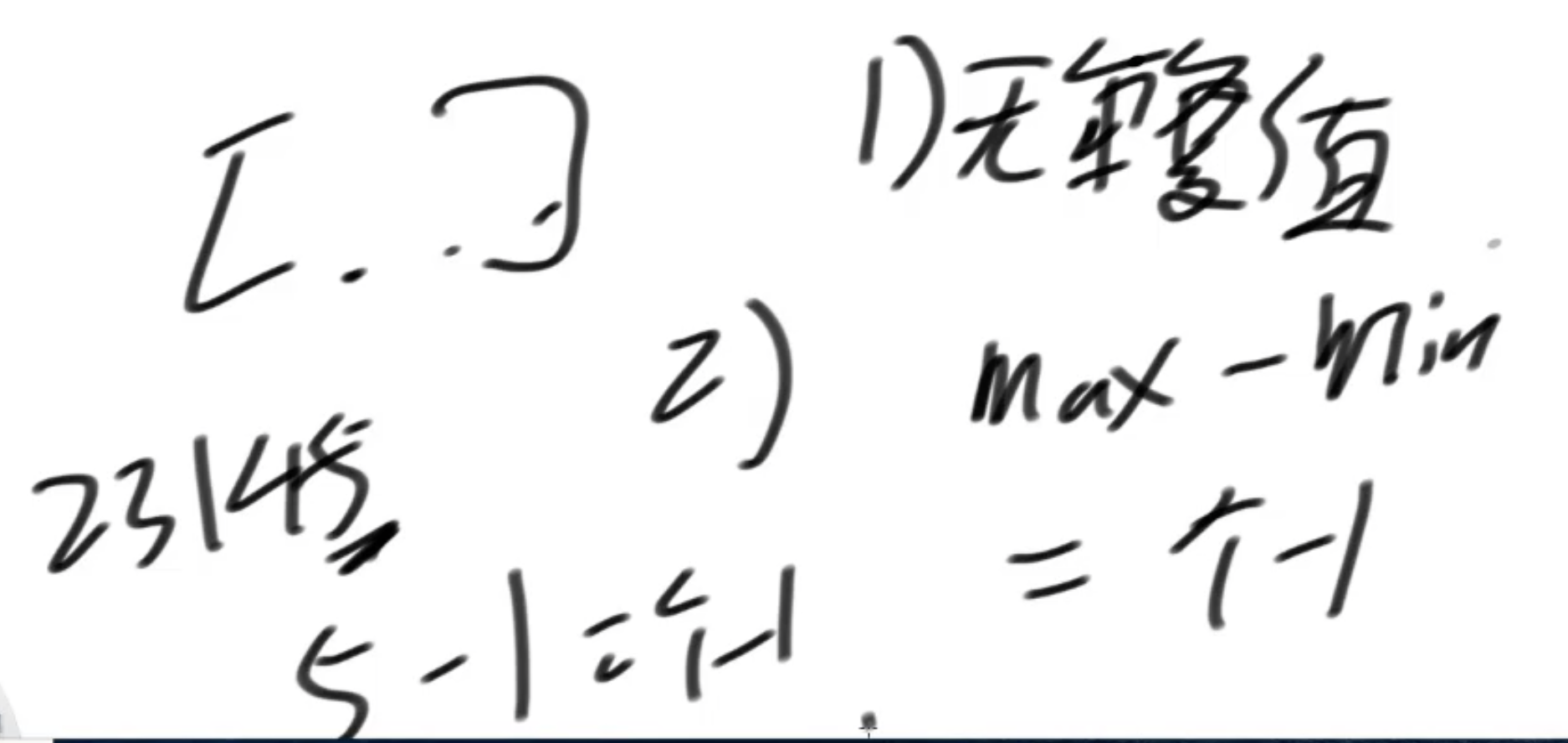最大可整合子数组长度
先给出可整合数组的定义:如果一个数组在排序之后,每相邻两个数的差的绝对值都为1,或者该数组长度为1,则该数组为可整合数组。
例如,[5, 3, 4, 6, 2]排序后为[2, 3, 4, 5, 6],符合每相邻两个数差的绝对值都为1,所以这个数组为可整合数组
给定一个数组arr, 请返回其中最大可整合子数组的长度。例如,[5, 5, 3, 2, 6, 4, 3]的最大可整合子数组为[5, 3, 2, 6, 4],所以请返回5
注意:本题中子数组的定义是数组中连续的一段区间,例如 [1,2,3,4,5] 中 [2,3,4] 是子数组,[2,4,5] 和 [1,3] 不是子数组

不能排序:注意:本题中子数组的定义是数组中连续的一段区间
eg:

暴力找到到每个子数组


以上是暴力方法,优化:满足以下两个条件必可整合

如果定义很长很复杂,看能不能改验证标准
public static int getLIL(int[] arr) {
if (arr == null || arr.length == 0) {
return 0;
}
int len = 0;
int max = 0;
int min = 0;
HashSet<Integer> set = new HashSet<Integer>();
for (int L = 0; L < arr.length; L++) { // L 左边界
set.clear();
max = Integer.MIN_VALUE;
min = Integer.MAX_VALUE;
for (int R = L; R < arr.length; R++) { // R 右边界
// arr[L..R]这个子数组在验证
if (set.contains(arr[R])) {
// arr[L..R]上开始 出现重复值了,arr[L..R往后]不需要验证了,
// 一定不是可整合的
break;
}
// arr[L..R]上无重复值
set.add(arr[R]);
max = Math.max(max, arr[R]);
min = Math.min(min, arr[R]);
if (max - min == R - L) { // L..R 是可整合的
len = Math.max(len, R - L + 1);
}
}
}
return len;
}
public static void main(String[] args) {
Scanner sc = new Scanner(System.in);
int N = sc.nextInt();
int[] arr = new int[N];
for(int i = 0 ; i < N ; i++)
{
arr[i] = sc.nextInt();
}
System.out.println(getLIL(arr));
}



